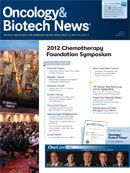How Close Is Close Enough?
We have come a long way from the microscope of Galileo, but questions remain in actual practice about how close we need to get to help our patients.
Andrew L. Pecora, MD
Editor-in-Chief
Oncology & Biotech News
Chief Innovations Officer, Professor, and Vice President of Cancer Services John Theurer Cancer Center at Hackensack University Medical Center
Imagine that an oncologist who specializes in leukemia is sitting in an airplane some 35,000 feet above sea level being asked to diagnose a patient in an emergency room. Of course, this is absurd. Now let us assume that the specialist lands, rushes to the hospital, and takes a history and examines the patient. The patient reports progressive fatigue and gum bleeding, and the specialist notes pallor and finds ecchymosis and small vein thrombosis at prior intravenous puncture sites. A presumptive diagnosis of acute leukemia is made. However, to make a diagnosis, the specialist needs to get a whole lot closer.
The microscope was invented in 1590, and it was Giovanni Faber who coined the name microscope when referring to Galileo Galilei’s compound microscope in 1625.
In our patient’s case, a peripheral blood smear is made after the patient’s white cell count is found to be elevated with low hemoglobin and platelets. Now, 100 times “closer” using a microscope in the hematology lab, the specialist observes many myeloid blasts with large granules. Special stains confirm the blasts are myeloid, but to make a diagnosis, it is time to get even closer.
Diagnostic cytogenetics came into practice in the 1950s after Joe Hin Tjio and Albert Levan developed the technique of culture to induce mitosis, spreading chromosomes by using a hypotonic solution, and then arresting mitosis using colchicine. Squashing the chromosomes on a slide allowed individual chromosomes to be cut out and arranged in the standard karyotype used today.
Given our patient’s smear and presence of disseminated intravascular coagulation (DIC), a diagnosis of acute promyelocytic leukemia was considered, so the specialist decided to get “even closer” to confirm. The classic 15:17 translocation was identified on cytogenetics; however, to confirm the diagnosis, the specialist once again needed to get even closer.
In 1983, Kary Mullis developed a technique that enabled the amplification of small pieces of DNA a millionfold. Called the polymerase chain reaction (PCR), the technique amplified a submicron segment of our patient’s DNA looking for a PML/RAR alpha fusion gene.
In our patient’s case, none was found. The patient received standard chemotherapy, but did not receive all-trans-retinoic acid (ATRA) and was referred for an allogeneic bone marrow transplant, given his cytogenetic risk group.
Our patient is actually a real case that would have ended here had his physician not decided to look closer one more time.
DNA consists of billions of nucleic base pairs. There are many people who contributed to the science of DNA sequencing, including Fredrick Sanger in the 1970s. First-generation sequencing was used in the 1980s and was followed by semiautomated techniques developed by Leon Hood in the mid-1980s. Craig Venter and colleagues went after the coding fraction of DNA and with others, sequenced the first whole genomes of a variety of species, including man. Massively parallel signature sequencing (MPSS) was refined in the early 2000s and has led the way to today’s next-generation sequencing (NextGen sequencing).
In our real case, NextGen sequencing found an aberrant PML/RAR alpha fusion gene. In place of a transplant, the patient received standard therapy with ATRA and was cured.
We have come a long way from the microscope of Galileo, but questions remain in actual practice about how close we need to get to help our patients.




